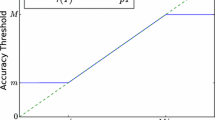Abstract
Operating room (OR) utilization is a significant determinant of hospital profitability. One aspect of this is surgical scheduling, which depends on accurate predictions of case duration. This has been done historically by either the surgeon based on personal experience, or by an electronic health record (EHR) based on averaged historical means for case duration. Here, we compare the predicted case duration (pCD) accuracy of a novel machine-learning algorithm over a 3-month period. A proprietary machine learning algorithm was applied utilizing operating room factors such as patient demographic data, pre-surgical milestones, and hospital logistics and compared to that of a conventional EHR. Actual case duration and pCD (Leap Rail vs EHR) was obtained at one institution over the span of 3 months. Actual case duration was defined as time between patient entry into an OR and time of exit. pCD was defined as case time allotted by either Leap Rail or EHR. Cases where Leap Rail was unable to generate a pCD were excluded. A total of 1059 surgical cases were performed during the study period, with 990 cases being eligible for the study. Over all sub-specialties, Leap Rail showed a 7 min improvement in absolute difference between pCD and actual case duration when compared to conventional EHR (p < 0.0001). In aggregate, the Leap Rail method resulted in a 70% reduction in overall scheduling inaccuracy. Machine-learning algorithms are a promising method of increasing pCD accuracy and represent one means of improving OR planning and efficiency.




Similar content being viewed by others
References
Gordon, T., Paul, S., Lyles, A., and Fountain, J., Surgical unit time utilization review: Resource utilization and management implications. J. Med. Syst. 12(3):169–179, 1988.
Peltokorpi, A., How do strategic decisions and operative practices affect operating room productivity? Health Care Manag. Sci. 14(4):370–382, 2011.
Gabriel, R. A., Wu, A., Huang, C. C., Dutton, R. P., and Urman, R. D., National incidences and predictors of inefficiencies in perioperative care. J. Clin. Anesth. 31:238–246, 2016.
May, J. H., Spangler, W. E., Strum, D. P., and Vargas, L. G., The surgical scheduling problem: Current research and future opportunities. Prod. Oper. Manag. 20(3):392–405, 2011.
Tankard, K., Acciavatti, T. D., Vacanti, J. C. et al., Contributors to operating room underutilization and implications for hospital administrators. Health Care Manag. (Frederick). 37(2):118–128, 2018.
Laskin, D. M., Abubaker, A. O., and Strauss, R. A., Accuracy of predicting the duration of a surgical operation. J. Oral Maxillofac. Surg. 71(2):446–447, 2013.
Wu, A., Huang, C. C., Weaver, M. J., and Urman, R. D., Use of historical surgical times to predict duration of primary Total knee arthroplasty. J. Arthroplasty. 31(12):2768–2772, 2016.
Stepaniak, P. S., Heij, C., Mannaerts, G. H., De quelerij, M., and De vries, G., Modeling procedure and surgical times for current procedural terminology-anesthesia-surgeon combinations and evaluation in terms of case-duration prediction and operating room efficiency: A multicenter study. Anesth. Analg. 109(4):1232–1245, 2009.
Eijkemans, M. J., Van houdenhoven, M., Nguyen, T., Boersma, E., Steyerberg, E. W., and Kazemier, G., Predicting the unpredictable: A new prediction model for operating room times using individual characteristics and the surgeon's estimate. Anesthesiology. 112(1):41–49, 2010.
Bishop, C., Pattern recognition and machine learning. Berlin: Springer, 2006, ISBN 0-387-31073-8.
Mason, L., Baxter, J. Bartlett, P. L., and Frean, M., Boosting algorithms as gradient descent. In S.A. Solla and T.K. Leen and K. Müller. Advances in neural information processing systems 12. MIT Press. 512–518, 1999.
Rokach, Lior, and Maimon, O., Data mining with decision trees: Theory and applications. World Scientific Pub Co Inc. ISBN 978-9812771711, 2008.
Breiman, L. Machine Learning 45: 5, 2001. https://doi.org/10.1023/A:1010933404324.
Russell, S. J., and Norvig, P., Artificial intelligence: A modern approach. Pearson, 2016.
Dexter, F., and Macario, A., Decrease in case duration required to complete an additional case during regularly scheduled hours in an operating room suite: A computer simulation study. Anesth. Analg. 88(1):72–76, 1999.
Macario, A., What does one minute of operating room time cost? J. Clin. Anesth. 22(4):233–236, 2010.
Van Houdenhoven, M., Van oostrum, J. M., Hans, E. W., Wullink, G., and Kazemier, G., Improving operating room efficiency by applying bin-packing and portfolio techniques to surgical case scheduling. Anesth. Analg. 105(3):707–714, 2007.
Dexter, F., and Traub, R. D., How to schedule elective surgical cases into specific operating rooms to maximize the efficiency of use of operating room time. Anesth. Analg. 94(4):933–942, 2002 table of contents.
Dexter, F., and Ledolter, J., Bayesian prediction bounds and comparisons of operating room times even for procedures with few or no historic data. Anesthesiology. 103(6):1259–1167, 2005.
Funding
None. Data were provided by Leap Rail, Inc.
Author information
Authors and Affiliations
Corresponding author
Ethics declarations
Conflict of Interest
Justin P. Tuwatananurak declares that he has no conflict of interest. Shayan Zadeh serves as the CEO of Leap Rail, Inc. Xinling Xu PhD declares that she has no conflict of interest. Joshua A. Vacanti declares that he has no conflict of interest. William R. Fulton declares that he has no conflict of interest. Jesse M. Ehrenfeld declares that he has no conflict of interest. Richard D. Urman has received funding from Medtronic, Merck and Mallinckrodt for unrelated research and honorarium from 3 M and Posimir.
Ethical Approval
All procedures performed in studies involving human participants were in accordance with the ethical standards of the institutional and/or national research committee and with the 1964 Helsinki declaration and its later amendments or comparable ethical standards.
Informed Consent
Informed consent requirement was waived given the deidentified nature of the data and observational nature of the study.
Additional information
Publisher’s Note
Springer Nature remains neutral with regard to jurisdictional claims in published maps and institutional affiliations.
This article is part of the Topical Collection on Systems-Level Quality Improvement
Rights and permissions
About this article
Cite this article
Tuwatananurak, J.P., Zadeh, S., Xu, X. et al. Machine Learning Can Improve Estimation of Surgical Case Duration: A Pilot Study. J Med Syst 43, 44 (2019). https://doi.org/10.1007/s10916-019-1160-5
Received:
Accepted:
Published:
DOI: https://doi.org/10.1007/s10916-019-1160-5




